#barbara ann teer
Explore tagged Tumblr posts
Text

Barbara Ann Teer, founder of the National Black Theatre (circa late 1960s)
20 notes
·
View notes
Text


W 🎄 T C H I N G
#CAROL FOR ANOTHER CHRISTMAS (1964)#JOSEPH L MANKIEWICZ#ROD SERLING#Percy Rodriguez#Sterling Hayden#James Shigeta#Ben Gazzara#Barbara Ann Teer#Steve Lawrence#Eva Marie Saint#Pat Hingle#Robert Shaw#Peter Sellers#Britt Ekland#CHARLES DICKENS#A CHRISTMAS CAROL#1960s#TURNER CLASSIC MOVIES#United Nations#AUTHORITARIANISM#WATCHING#TWILIGHT ZONE#NIGHT GALLERY#SOLDIERS#OMINOUS#POST-APOCALYPTIC#DYSTOPIA#WWII#WWI
4 notes
·
View notes
Text
Exclusive Interview: National Black Theatre's artistic director Jonathan McCrory "we all have the ability to cultivate a renaissance for our own community, for our own people, if we so choose"
For over a decade, Harlem-based artist Jonathan McCrory has served as Executive Artistic Director of the groundbreaking National Black Theatre (NBT), though he prefers the term “creative doula”. The two-time Obie-winner describes his role as enabling “unseen ideas to be birthed between the parents, which are the playwright and the director, or sometimes the playwright and the page”, McCrory…

View On WordPress
#Bayard Rustin#beehive beyoncé#Beyoncé#beyonce#black gay artist#Black theatre#Broadway#defiance of our bloom national black theatre#dr barbara ann teer#dr barbara ann teer beyoncé#fat ham#gay#james baldwin#James Kleinmann#jonathan mccrory black queer director#jonathan mccrory black queer producer#jonathan mccrory theatre producer#jonthan mccrory black queer artist#lgbtq#lgbtq theatre#National Black Theatre#National Black Theatre 2023-2024#national Black theatre 56th season#national black theatre broadway#national black theatre current season#national black theatre fat ham#national black theatre history#NBT#queer#queer theatre
2 notes
·
View notes
Text
✊🏿🖤#ArtIsAWeapon
Black art, music and culture celebrating #Juneteenth (check each organization's website / social media for full details about their events):
Today, June 18 -
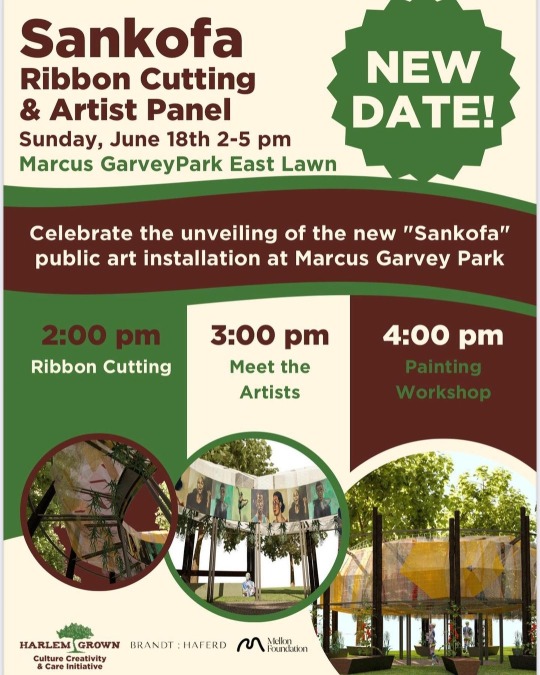

🎨@harlemgrown community public art installation of "Sankofa" by Jerome Haferd at #MarcusGarveyPark, 2PM-5PM; supported by @HeathGallery
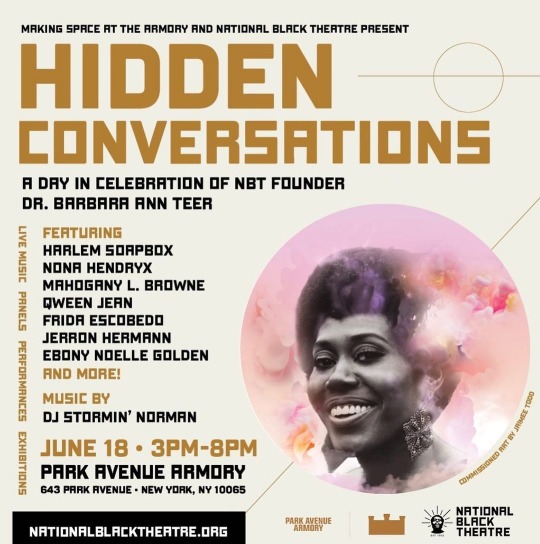
🎶🎙@natblacktheatre & @parkavearmory present HIDDEN CONVERSATIONS, a celebration of NBT Founder & CEO Emerita, Dr. Barbara Ann Teer featuring live music, panels, performances, and exhibitions from:
@jojoabot, @holland.andrews, @camillegbacon, @mobrowne, @mynameisnichi, #StevenFullwood, @ebonynoellegolden, @nazarethhassan, @nonahendryx, @jerronherman, @justinhicksmusic, @qween_jean, @blacktransliberation, @sade1111, @theaaronmarcellus, @jaymc86, @djstorminnorman, @__s__t__a__r__r___, @thesoapboxpresents, #MikaalSulaiman, and @itstheclassix. 3PM, Park Avenue Armory.


💃🏾@musclecars.nyc COLORING LESSONS JUNETEENTH BLOCK PARTY at @thelotradio, 10AM-10PM with @kfeelzzz, @livwutang, @lovie.world, @yvonnetstrong, @djspinna, @kamaal; after party at @goodroombk with @karizma_kaytronic_ , @_moyasin_, @djtaranyc, @donis.bk
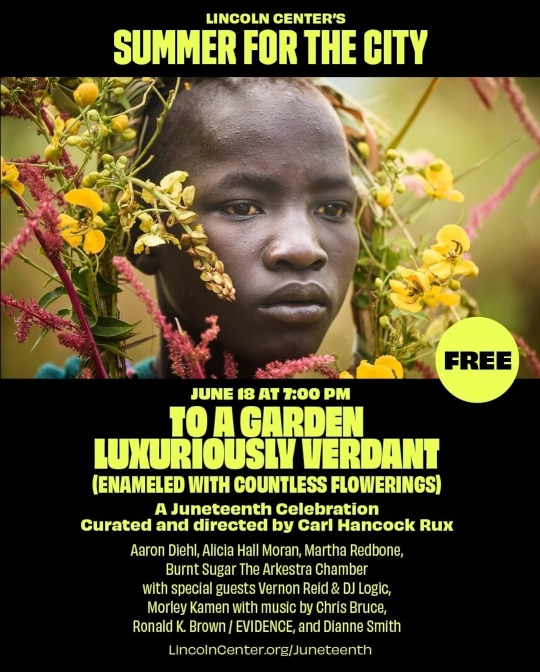
🎶@lincolncenter presents "To a Garden Luxuriously Verdant (Enameled with Countless Flowerings)" by @carlhancockrux featuring music + performances by @burntsugararkestra @martharedbone @aliciahallmoran @vurnt22 @evidencedance and more, a silent disco with DJ @iamrimarkable . 7PM, Lincoln Center
Tomorrow, June 19:
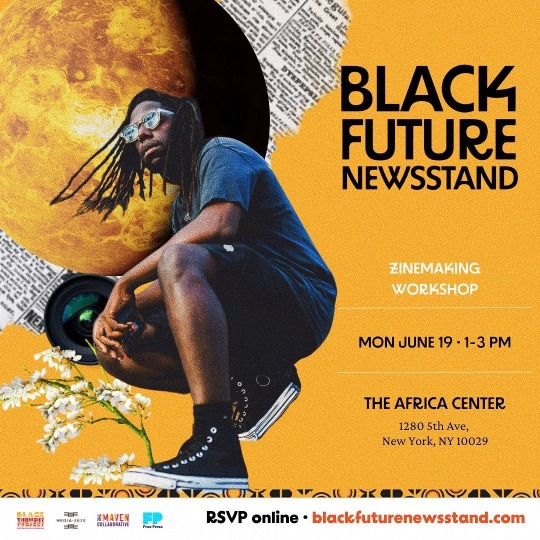

🎨@blackthoughtproject's Black Future Newsstand exhibition interactive zine-making workshop led by artist/designer Jen White-Johnson @jtknoxroxscenter at @theAfricaCenter, 1PM-3PM

🎶@take6official free concert at @carnegiehall's Stern Auditorium / Perelman Stage, 7 PM.
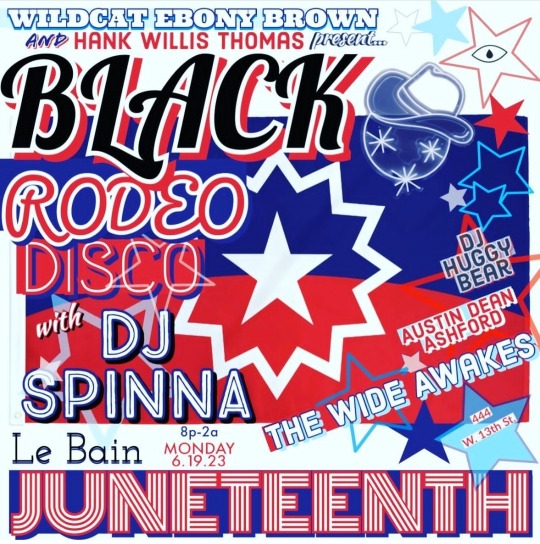
💃🏾@wildcatebonybrown & @HankWillisThomas present @BlackRodeoDisco featuring @djspinna @djhuggybear @theaustindeanashford @wideawakes at @LeBainnyc, 8PM-2AM
#JuneteenthCelebrations
#BlackCulture #BlackArt #BlackArtists #BlackMusicMonth #Freedom #FreeInNYC #BlackLiberation #TraScapades
0 notes
Photo



Carol for Another Christmas (1964) Joseph L. Mankiewicz
December 11th 2022
#carol for another christmas#1964#joseph l. mankiewicz#sterling hayden#ben gazzara#steve lawrence#peter sellers#pat hingle#robert shaw#eva marie saint#percy rodriguez#barbara ann teer#james shigeta#britt ekland#rod sterling#joseph l. mankiewicz' carol for another christmas
14 notes
·
View notes
Text
Beyoncé Album Review: Renaissance

(Parkwood Entertainment/Columbia)
BY JORDAN MAINZER
“There’s a whole lot of people in the house,” Beyoncé sings on “Break My Soul”, the first single from her new album Renaissance. Sure, it’s a declaration of, simply, numbers, her various collaborators, the swath of samples from decades of music history peppered throughout. But it’s also a statement of inclusiveness. Renaissance, purportedly the first installment of a trilogy of albums, celebrates Black and LGBTQ+ music and the judgement-free zones they honor. Representative of Beyoncé’s state of mind during the pandemic, it exemplifies her self-love and desire to break free in a time of isolation. And of course, it’s full of braggadocio and skill with the research and credentials to back it up.
It’s that last part that stands out the most on Renaissance. Samples and interpolations of house, bounce, and soul classics like Danube Dance’s “Unique”, Big Freedia’s “Explode”, and Teena Marie’s “Ooo La La La” span multiple songs. “ALIEN SUPERSTAR” borrows from something as ubiquitous as Right Said Fred’s “I’m Too Sexy” and academically well-regarded as Barbara Ann Teer’s “Black Theater” speech while simultaneously paying homage to the ballroom scene of the 60s in NYC, created by the Black and Latinx queer community in opposition to the racism of the white drag scenes. “Stilettos kicking vintage crystal off the bar / Category: bad bitch, I’m the bar,” Beyoncé chants over a techno beat. To hear these influences rub elbows in the same song, one that’s already been heard by millions of people across the globe, is, simply, pretty fucking cool. Ditto ballroom-vogue-house hybrid “PURE/HONEY”, which juxtaposes the pulsating backbone of Mr. Fingers’ “Mystery of Love” with Kevin Aviance’s “Cunty” as Beyoncé deadpans, “It should cost a million to look that good.” And “CHURCH GIRL” seamlessly combines Chicago and Southern hip-hop, starting with a lo-fi sample of The Clark Sisters’ gospel tune “Center of Thy Will” but morphing into skittering bounce; the moment when The Showboys’ “Drag Rap” beat comes is curation perfection.
The best parts of Renaissance, though, are the ones that emphasize Beyoncé herself above all else. Yes, her vocals dominate from the get-go. On opener “I’M THAT GIRL”, propulsive electronics slow into a reggaetón beat as she coos over a swirling sample of Tommy Wright III’s “Still Pimpin”, standing out no matter the tempo. Not even A.G. Cook’s thumping beat on “ALL UP IN YOUR MIND” can fully match her power, her ability to fill the thoughts of the minds of her lovers, friends, and admirers. Really, it’s when Beyoncé is given total room that she’s best able to communicate raw feeling. There’s a chunk of songs in a row on Renaissance with no samples, the space filled with just her singing, incredible melisma and all. Such is the case on the devotional “PLASTIC OFF THE SOFA”, where Beyoncé singing, “I think you’re so cool / Even though I’m cooler than you” is both funny and extremely serious. That is, she laughs it off but proves it--as if she needed to--on album standout “VIRGO’S GROOVE”, a sexed-up roller rink jam that sports perhaps her best vocal performance ever, ping-ponging up and down the scales.
Ultimately, Renaissance welcomes and educates. During her wordplay on “COZY”, Beyoncé’s sure to reference the progress pride flag, and she includes excerpts from a popular TikTok by trans television star Ts Madison. Her deep dive into LGBTQ+ culture calls to the past and look to the future. Is it pandering? That’s not really for me, a straight cisgender white male, to decide. Allyship is certainly important to Beyoncé, especially considering the album’s dedication to her late gay cousin who helped raise her and her sister Solange (and who died from AIDS-related illnesses). It’s an album much different from her brilliant 2013 self-titled record or Lemonade, not born of lived experience as much as a desire to lift her forebears. Renaissance ends with “SUMMER RENAISSANCE”, which prominently interpolates Donna Summer’s “I Feel Love”, the unofficial transition from disco to house, the song where, upon hearing it, Brian Eno rushed to David Bowie claiming he had heard “the sound of the future.” Renaissance isn’t really the sound of the future, the past, or the present. It’s the sound of class in session.
#album review#beyoncé#renaissance#beyonce#parkwood entertainment#columbia#columbia records#danube dance#big freedia#teena marie#right said fred#barbara ann teer#mr. fingers#kevin aviance#the clark sisters#the showboys#tommy wright iii#a.g. cook#tiktok#ts madison#solange#solange knowles#lemonade#donna summer#brian eno#david bowie
16 notes
·
View notes
Video
youtube
gRººv333S,,,n,,,J▲M§ ▬|s|!|O|!| ❤︎|!|t|!|y|▬{{mmxxii}}
..................number25 ....................of50
“ALIEN SUPERSTAR” by Beyoncé
DV:
It feels as though the conventional wisdom is now that the feminism wave of the early 2010s was an embarrassment - and while in some sense I agree (coverage was surface-level and quickly commodified; the more optimistic of us hoped representation was an actual victory), I also remember how it felt to see Beyoncé flash a giant “FEMINIST” behind her on stage for the first time, how it sounded to hear the biggest artist in the world sample Chimamanda Ngozi Adichie speaking about the concept on one of the year’s biggest pop songs. Ultimately it was a case study in the limitations of art as a political force, but it was also a demonstration of the power that art has to shift the Overton window and bring a concept firmly into the mainstream: like, yes it was ultimately silly to see every woman artist asked to say whether she was a feminist, but it was also an illustration of how long musicians and music coverage had elided politics that these questions felt new and exciting for a moment. Beyoncé’s choices - who she platforms, who she aligns herself with - make a statement about what matters. So it’s significant that on “ALIEN SUPERSTAR” she’s digging deeper to sample a quote from Barbara Ann Teer; it’s significant that the boldest track on one of the year’s biggest albums is co-produced by Honey Dijon, a trans artist who’s been a key figure in the club scene for years but who’s never had a platform like this. Because ultimately only Beyoncé has this platform. And in a time of increased attacks against trans people in the US, I’m under no illusions that putting more of us in prominent positions will increase our safety. But it does make an undeniable statement about where you stand. And I’m glad to have Bey on our side, especially when the result is a massive fucking banger like "ALIEN SUPERSTAR.”
MG:
I did not grow up in a dance house. I not only had no appreciation for Michael Jackson, I had no reference for him at all. When I listened to him decades removed from his dominance what I heard was pure boredom. I feel this way about a lot of supposedly wildly influential and exceptionally creative projects -- Smile by The Beach Boys, Trout Mask Replica by Captain Beefheart, Loveless by My Bloody Valentine, Dark Side of the Moon by Pink Floyd. Maybe you had to be there, alive at the time, to really appreciate the heft and ambition. Or maybe there are flaws in the fabric of my taste.
The very idea of interpolating a history of modern dance music in a single album sets my teeth on edge. What artist could possibly be vibrant enough, witness enough, and precise enough to weave through time and string all these complex reference points together -- not as a mash up of obvious signifiers, not as a pedantic lesson, not as a dexterous flex of personal wit and talent -- as a mosaic, as poetry, as folk art. Only Beyoncé, of course. Renaissance is so complex, vital, alive, and so much a product of its contributors (including the artists sampled, the producers tapped, and the layering of personal biography and pop culture) that I long for an annotated version.
Like most of what was missing from my home and my childhood, I discovered the absence through the internet or in college classes. In college I was introduced to T.S. Eliot’s The Wasteland, and it’s still my benchmark for how great and how vast a single piece of art can be. Its working title was “He Do the Police in Different Voices” -- a title I am pleased was scrapped in favor of portent and doom -- and it was a reference to the multiplicity of speakers present in the poem. Eliot made it all fit together in a way I still find truly mystical; single words are capable of reaching off the page and strangling the breath in my throat. Well, I compare a lot of what I like to The Wasteland but I’m always careful to note it falls short. Not here. What Beyoncé does with her voice on Renaissance is what Eliot does with the pen on The Wasteland. It is her voice, above all else, that gives this work its life. I do worry that in twenty or thirty years there will be another girl who grows up with half the world missing, who listens to Renaissance too late and dismisses it as boring, but I have to believe that when the production starts to sound dated and the concept feels bloated that Beyoncé’s voice will remain peerless.
2 notes
·
View notes
Text
8/3/20 O&A NYC HOLLYWOOD MONDAY: Slaves (1969) | Dionne Warwick and Ossie Davis
8/3/20 O&A NYC HOLLYWOOD MONDAY: Slaves (1969) | Dionne Warwick and Ossie Davis
Slaves, a 1969 American drama film directed by Herbert Biberman, was entered into the 1969 Cannes Film Festival. The film stars Dionne Warwick (in her screen acting debut), Ossie Davis, Stephen Boyd and Barbra Ann Teer (founder of the new established the Harlem based National Black Theatre- 1968). (more…)
View On WordPress
#Barbara Ann Teer#Drama#Entertainment#Film#Hollywood Monday#Ossie Davis#Out and About NYC Magazine#Slaves (1968). Dionne Warwick#Stephen Boyd#Video
0 notes
Link
April 18 - May 6, 2018
The Classical Theatre of Harlem (Ty Jones, Producing Artistic Director), Pemberley Productions and Dr. Barbara Ann Teer’s National Black Theatre are proud to present Sancho: An Act of Remembrance. This timely theater production celebrates the extraordinary life of Charles Ignatius Sancho, an African man who was born on a slave ship and rose to prominence as a noted abolitionist, composer, social satirist and man of refinement in 18th century English society. Sancho makes his mark in history by becoming the first British-African to cast a vote in England in 1774.
In this one man show, written, conceived and helmed by one of the United Kingdom’s most lauded stage and film actors Paterson Joseph, Sancho’s remarkable life is unveiled while casting new light on the often misunderstood narratives of the British-African experience, which are parallel to the stories of many African-Americans today. The play unfolds as Sancho prepares to be immortalized by Thomas Gainsborough, the famous 18th century English painter (whom painted Sancho in real life and was an acquaintance). The audience is granted a firsthand account into Sancho’s determined rise from poverty and servitude via the road of education, making for a truly remarkable life story. The themes of prejudice, xenophobia, and nationalism are topics that resonate today in modern American society and are explored via an elegant, witty, and often comedic delivery.
198 notes
·
View notes
Text
Barbara Ann Teer's vision inspire me a lot. She created an Art theory for Theatre in accordance with African American Consciousness. She understood that the cultural revolution necessarily involved the creation and appropriation of concepts specific to her community.
0 notes
Photo

“Black Women and the Ballot” Monday, April 8th, 7pm at The National Black Theatre 125th St. and Fifth Ave. 🎟https://bit.ly/2CsX4pR . Join Us TONIGHT at 7pm at the historic National Black Theater as we support another phenomenal American Slavery Project Production... "Black Women and the Ballot" 3 short plays and a conversation on April 8th at the National Black Theatre, 2031 Fifth Ave Harlem USA!! ******** Judy Tate: Co-founder and Producing Artistic Director of The American Slavery ******* In 1968, Dr. Barbara Ann Teer founded Harlem's National Black Theatre!! “In 1983, when the building that housed the theater burned down, she decided to buy the entire city block. (See? Magic.) NBT would go on to be the first revenue generating Black arts complex in America. It is currently the oldest continually run Black theater in New York and the theater in America longest-run by a woman of color.”~ Sade Lythcott Sade Lythcott, born and raised in New York City, is the daughter of Dr. Barbara Ann Teer. Sade is currently the CEO of the NBT. https://msmagazine.com/2019/03/29/we-all-can-be-who-we-were-born-to-be%EF%BB%BF/ . . #AmericanSlaveryProject https://www.instagram.com/p/BwAKZuHFtC0/?utm_source=ig_tumblr_share&igshid=17l24dscy4jea
0 notes
Photo

Uptown Baby, Uptown Baby!! 🎉🎉🎉🎉 Excited to share with you that The Free Black Woman's Library will be in Harlem on Saturday, July 8 for a special event happening at the iconic National Black Theater!! More details to come, just wanted to give my uptown family a heads up to save the date!! 😏 Until then get into this perfect pic of the vibrant, gorgeous and amazing writer, actress, teacher and visionary Dr. Barbara Ann Teer who founded this legendary venue in 1968. She was FLY!!! It was the first revenue generating Black arts complex in the US. 💕😍✨💕 See you soon folks, have a blessed Sunday!! 📚🤓💕😏
#blackwomen#blackhistory#blackmagicwoman#librarylove#harlem#savethedate#mobilelibrary#blackwomanbibliophile#freeblackwomenslibrary
7 notes
·
View notes
Text
National Black Theater Plans Next Act in a New Harlem High-Rise
National Black Theater Plans Next Act in a New Harlem High-Rise
The pathbreaking company plans to replace its Harlem home with a 21-story building with apartments, retail and a new theater.
View On WordPress
#Apollo Theater#Dasha Zhukova#Handel Architects LLP#Harlem (Manhattan#NY)#Lythcott#Sade#McCrory#Jonathan (Theater Director)#Michael Lythcott#National Black Theater#Ray#Real Estate (Commercial)#Real Estate and Housing (Residential)#Teer#Barbara Ann#Theater#Theaters (Buildings)
0 notes
Text
Barbara Ann Teer

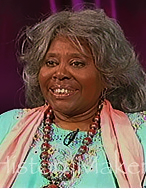



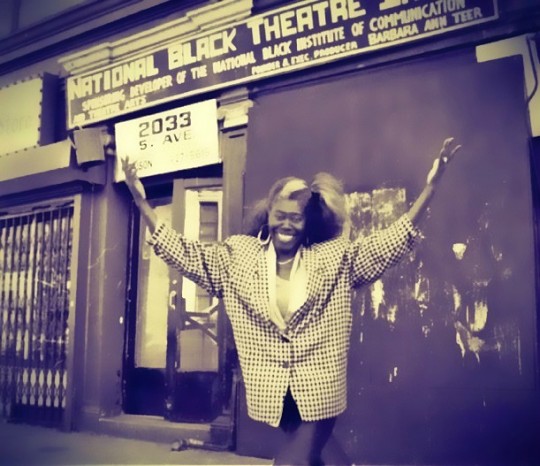
Dr. Barbara Ann Teer (June 18, 1937 – July 21, 2008) was an African-American writer, producer, teacher, actress and visionary. In 1968, she founded Harlem's National Black Theatre, the first revenue-generating black theater arts complex in the U.S.
Early life
Teer was born in East St. Louis, Illinois, to Fred L. and Lila B. Teer, well known as dedicated educators and community leaders. Early in her life, Barbara demonstrated extraordinary gifts and talents. At 15, she graduated from Lincoln High School in East St. Louis. At 19, she graduated Magna Cum Laude with a bachelor's degree in dance education from the University of Illinois, Urbana-Champaign, and immediately travelled to study dance with Antoine Decroaux in Paris and with Mary Wigman in Berlin. Her sister, Frederika Teer, was a Congress Of Racial Equality Field Secretary (organizer)in the north & mid-South from 1960. She and Genevieve Hughes were the first women to hold the title.
Career in the theatre
Following her international travels, Teer came to New York City, where she pursued a career as a professional dancer. She studied with Alwin Nikolais at the Henry Street Playhouse and Syvilla Fort (Katherine Dunham Technique). She toured with the Alvin Ailey Dance Company, Louis Johnson Dance Company and the Pearl Bailey Las Vegas Revue. In 1961, Teer made her Broadway debut as dance captain in the Tony award-winning musical Kwamina, which was choreographed by Agnes de Mille. Teer performed in the film version of Ossie Davis’s stage play Purlie Victorious. After a knee injury in 1962, Teer switched her primary artistic focus from dance to theatre. She studied with acting luminaries including Sanford Meisner, Paul Mann, Lloyd Richards, and Phillip Burton. Teer crafted a lucrative and successful acting career, receiving numerous accolades, including a Drama Desk Award and several Obie Awards. Between 1961 and 1966, she continued to perform on and off-Broadway as well as in television and film.
Teer grew disillusioned with the negative stereotypes she came across in her quest for responsible acting roles, making an exception to appear in the 1969 motion picture "Slaves." . In 1963, she co-founded The Group Theatre Workshop with Robert Hooks, which later became the Negro Ensemble Company. Arguing for independence from the white-dominated mainstream, she wrote in a 1968 article in The New York Times:
“We must begin building cultural centers where we can enjoy being free, open and black, where we can find out how talented we really are, where we can be what we were born to be and not what we were brainwashed to be, where we can literally ‘blow our minds’ with blackness.”
National Black Theatre
In 1968, with the emerging cultural consciousness of the African experience, Teer decided to found a new theatrical institution committed to cultural transformation, social change, and historical innovation within African-American communities. Leaving a flourishing career, and following in the activist footsteps of her older sister Fredrica (who had been an organizer with Eldridge Cleaver and Stokley Carmichael), Teer founded the National Black Theatre (NBT). Its mission was self-empowerment, liberation, truth and training for a new generation of artists and creative entrepreneurs. Over five decades, Teer was an agent of change and an eminent curator of the African cultural heritage.
Her representation of authentic cultural traditions of people of African descent born in America was unprecedented. She fashioned a new cultural paradigm by organizing a spiritual and artistic community of people who were conscious of their responsibility as “institution builders.”
Methodology
In addition to her role as a pioneer of Black theatre that reached beyond America, she developed a groundbreaking methodology taught exclusively at the National Black Theatre called “TEER: The Technology of Soul.” TEER Technology utilized the symbolism, rituals, and mythology of authentic West African traditions. It shifted the traditional paradigm of Western theatre from a “self-conscious” art form to “God-conscious” art, allowing artistic expression which thrived on audience participation and was based on “call and response” dialogue embodied in the Black church. The creative process removed the two-dimensional “psychic distance” existing between the artist on stage and the audience. She called it a “Ritualistic Revival — theatre art that flows from the heart.”
Schools and cadre trainings
During the 1970s, NBT continued to be a fertile training ground for actors, singers, dancers, and musicians within the Harlem community and beyond. In 1974, Teer founded the Children’s School for the Development of Intuitive and God-Conscious Art (CSDIG). Having recently become a mother, she wanted to create a nurturing, loving, and empowering environment in which the children of NBT staff could grow, learn, and thrive in a self-affirming and unfettered manner. A concept ahead of its time, CSDIG enabled the NBT staff to bring their children to work with them and provided them with a priceless education.
Teer wrote, directed and produced a substantial and impressive body of work, including ritualistic revivals (plays) and interactive artistic reviews. She believed theatre and artistic expression were sublime sources of healing and nurturing for the Black community and, in fact, for all of humanity.
Self-determination and real estate
Her unwavering commitment to exploring African artistic expression was complemented by the belief that artists should also be owners/entrepreneurs within the communities where they live, work and serve. Teer viewed artistic expression and ownership as a formidable power source for generating social and political change. In that vein, she purchased a city block of property in Central Harlem on a major business corridor at 125th Street and Fifth Avenue. The National Black Theatre was the sponsoring developer for a 64,000 square feet (5,900 m2) real estate project that became the first revenue-generating Black Theatre Arts Complex in the country.
Honors
For her decades of inspiration and cultural advocacy, Teer was the recipient of an Honorary Doctorate of Law degree from the University of Rochester and an Honorary Doctorate of Humane Letters degree from the University of Southern Illinois.
Personal life
Teer had an early marriage to Actor-Comedian Godfrey Cambridge (1962–65) and subsequently had children with Michael Adeyemi Lythcott. She was the mother of two children — son Michael F. "Omi" Lythcott and daughter Barbara A. "Sade" Lythcott.
Wikipedia
3 notes
·
View notes
Text
Harlem Stage and National Black Theatre Present “Mothers of the Movements”
Harlem Stage and National Black Theatre Present “Mothers of the Movements”
HARLEM STAGE ANNOUNCES 2018 SPRING SEASON BRINGING WORLD CLASS PERFORMING ARTISTS OF COLOR TO HARLEM
A Two-Part Series Paying Tribute to Iconic Black Women Pioneers Including Dr. Barbara Ann Teer, Abbey Lincoln and Ella Baker
Harlem Stage, the legendary uptown venue that for over 30 years has promoted the creative legacy of Harlem and artists of color from around the corner and across the globe,…
View On WordPress
#Abbey Lincoln and Ella Baker#black culture events NYC#Carnegie Hall#Civil Rights and Black Arts movements#Dr. Barbara Ann Teer#Edmar Colón#Ella Baker#Harlem Stage Gatehouse#Mothers of the Movements#National Black Theater#National Black Theatre’s Communication Arts Program#Reggie Workman#Sameer Gupta#Terri Lyne Carrington#The Black Woman: She Does Exist#WORLD CLASS PERFORMING ARTISTS OF COLOR TO HARLEM
0 notes
